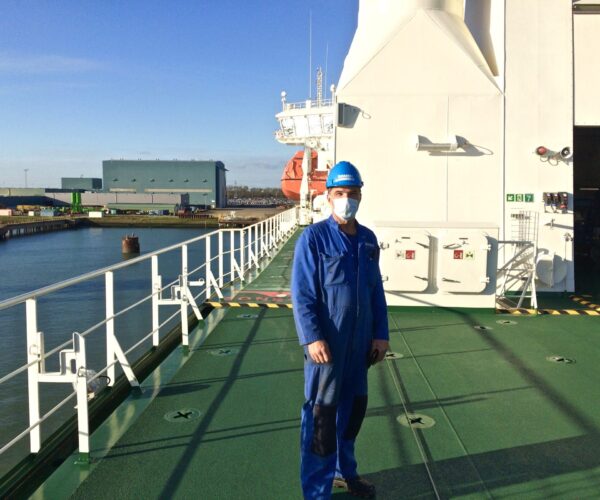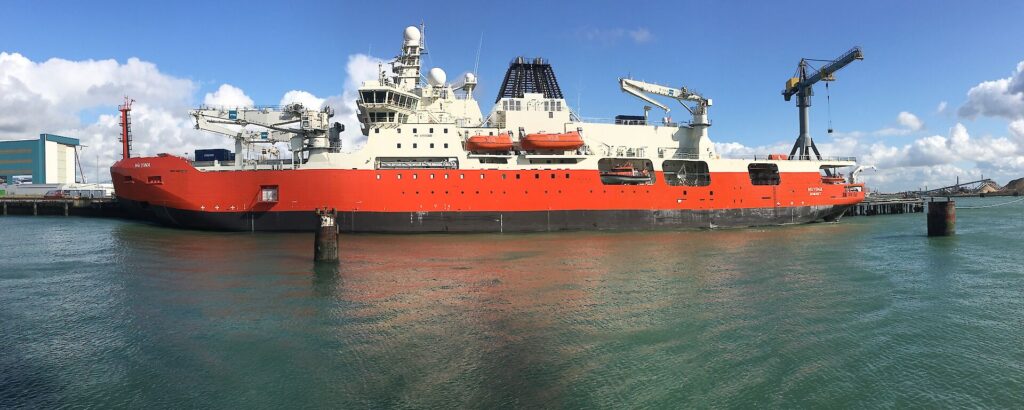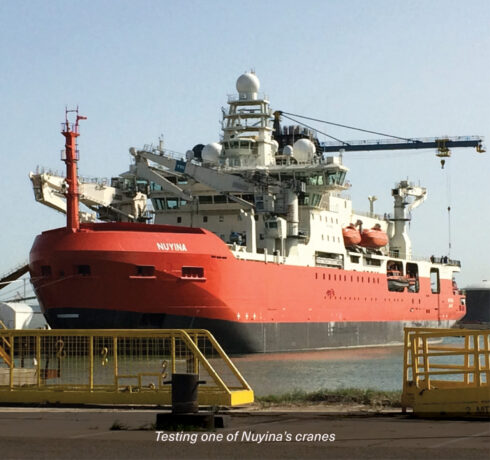RSV Nuyina, the icebreaker for Australia, is finished and will soon be heading out to sea. John Deurloo is the ship’s commissioning engineer. “At the moment I am even sleeping on board.”
 Inbedrijfsteller John Deurloo aan boord van de ijsbreker RSV Nuyina
Inbedrijfsteller John Deurloo aan boord van de ijsbreker RSV Nuyina
As commissioning engineer, John is responsible for commissioning the cranes and other lifting equipment on board. This is not a straightforward job because the Nuyina has a lot of cranes. “There has to be,” says John, “because the ship will be taking a lot of cargo with it when it sails from its home port of Hobart to supply research stations on the immense continent of Antarctica, a journey that will take months. Then you are really talking about 150 containers of stuff.”
As a certified crane operator authorised to work with offshore cranes, John will operate all the cranes on board during the commissioning process.
Two gigantic cranes – each capable of lifting no less than 55 tons – stand proudly next to each other on the fore-ship of the Nuyina. There is another crane at the stern; this one can handle 15 tons. John knows from experience that these cranes do their work very efficiently and, above all, very quickly. “Within ten minutes, they can load or unload up to four containers with a hook speed of 18 metres per minute with a weight of 55 tons. Or 60 metres per minute with an empty hook,” he explains.
 The RSV Nuyina on the quay at Vlissingen-East. Photo: Jono Reeve
The RSV Nuyina on the quay at Vlissingen-East. Photo: Jono Reeve
The Nuyina also has hoists that can be cleverly manoeuvred out from the inside of the ship to process cargoes; these are the ‘container overhead cranes’. And in the heart of the 160-metre long icebreaker is a crane that can lower scientific research instruments into the water via a moon pool. A moon pool is a place in the ship from which instruments or divers can gain access to the water underneath the ship. It is actually a hole in the hull, where work can be carried out in a protected environment even in heavy seas or ice. The top of the moon pool can be closed with a hatch.
The highly advanced supply and research vessel has a moveable A-frame on the aft deck and two fishing gallows, which the crew will use to collect samples of Antarctic krill, a type of shrimp that occurs only in the waters of the Southern Ocean. “Yes, it is a special ship,” John concludes. “Kommer Damen is so proud of the result that he has taken a tour on board a few times.”

